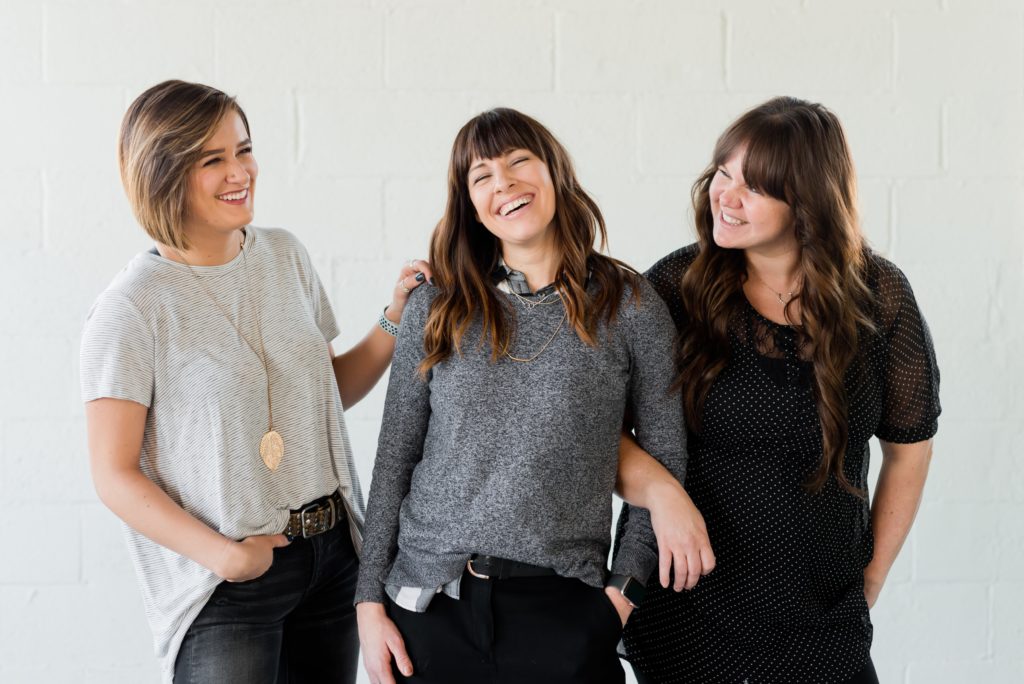When I was a kid I loved to tumble in our empty living room, the backyard or in gym class. I used my tumbling skills as a junior high cheerleader and then in high school on the gymnastics team. As you can imagine, I was very small and flexible, however I didn’t have a lot of power, so I was only successful doing floor and balance beam. For three months of the year we would have gymnastic practice six days per week lasting for three hours, which included endurance work such as running up and down flights of stairs or running two miles. I was not the best on the team but I was a good leader and had a lot of fun with my teammates. I fortunately never had an injury.
In my 20’s and 30’s I skied and played tennis a lot and never had an injury then either. In fact, I never had a musculoskeletal injury until I began running in my 40’s.
What happens to women after age 40 (or sometimes earlier) that puts us at more risk of injury? The perimenopause or menopausal years!
During menopause, women experience hormonal changes, particularly a drop in estrogen. The estrogen drop affects women’s musculoskeletal system in a multitude of ways:
- An increase in body fat
- A decrease in muscle mass
- Bone loss
- A decrease in strength
- A decrease in flexibility
These musculoskeletal losses can lead to serious issues such as osteoporosis, osteopenia, muscle strains, tendonitis, bursitis, fractures, decreased balance, and increased risk for falls.
Osteopenia/osteoporosis
Osteoporosis makes your bones weak and brittle from low bone density. When you’re young, your bones are constantly regenerating new bone which increases your bone density. Somewhere around age 35 or older your body doesn’t generate bone as fast as it used to. This coupled with hormonal changes, genetic factors, previous activity level and previous prolonged steroid use can make you prone to osteoporosis.
Osteopenia is the beginning stage of osteoporosis.
Diagnosis is done via a dexa scan which measures the bone density of your wrist, lumbar spine and hip. The American College of Obstetrics and Gynecology recommend women over the age of 65 and men over the age of 70 get a dexa scan.
There are some osteopenia/osteoporosis tell tale signs that we see in our patients during a physical therapy evaluation.
- Increased thoracic kyphosis – the upper back becomes more rounded
- Flattened lumbar lordosis – the lower back becomes flatter
- Flattened thoracic kyphosis – the upper back becomes flatter
- Iliac crest (top of the pelvic bone) distance to rib cage is very narrow
- Scoliosis – increase curvature of spine in “S” shape
- Decreased height – you will become shorter as the spinal bones (vertebrae) collapse on itself
When I see these postural changes in someone, no matter their age, I will recommend they talk to their doctor about getting a dexa scan. I have seen many women diagnosed with osteopenia or osteoporosis in their 40s and 50s. It is important to have an official diagnosis to receive appropriate exercises, education and medical intervention. Ultimately osteoporosis/osteopenia puts you at greater risk for fractures, falls, and pain.
Muscle strains, tendonitis, bursitis
Have you experienced increased soft tissue injuries now that you’re over 40? With a decrease in muscle and bone mass along with increased body fat your propensity for injury is greater. If you have been on prolonged use of steroids for a medical condition, this will also weaken your bones and soft tissue.
The days of being a weekend warrior and having a little muscle soreness are gone. Before you know it, that little muscle soreness is actually an injury that will take weeks, maybe even months to heal.
Falling and Balance
Do you just feel like you are not as agile or as quick on your feet as you used to be?
Well, the bone and muscle loss will also affect your balance and agility. I can’t tell you how many times a day I educate my patients how to be mindful as they move through the day. Even though, in your head, you can still move and jump and exercise like you did as a teenager (in my head I can still do a backflip) your body just isn’t the same and will not respond the same.
When you move as you did when you were younger your chances of losing your balance and possibly falling is greater which can lead to injury such as a fracture.
Physical Therapy and Menopause
Wouldn’t it be nice if insurance realized the cost savings and benefits for preventive medicine? If I had a say in it, all people over the age of 40 would come in for an annual musculoskeletal screening to monitor changes over the years. Why? Because physical therapists evaluate the following parameters and monitor changes over time:
In addition to the above physical checkup, physical therapists ask a lot of questions during the patient’s therapy session. Because of this, we are often the first in the chain of healthcare providers to truly unravel the patient’s story of how and why they are currently suffering.
We then teach appropriate exercises, safety education, and guidance to help patients stay healthy so they can enjoy the things they love to do.
Are you Approaching Menopause? Here’s What You Can Do
Despite the menopausal changes in women’s bodies, there are things that can be done to maintain or improve bone and musculoskeletal health.
- Keep moving!
- Weight bearing exercise such as walking or running.
- Strength training using light weights
- Avoid sitting too much.
- Strengthen your hip muscles
- Be mindful of your movement throughout the day
- Mindful walking
Are you interested in having a “menopause” check up? Give us a call or contact us through our website.
Sources:
https://www.mayoclinic.org/diseases-conditions/osteoporosis/diagnosis-treatment/drc-20351974







Leave a Reply